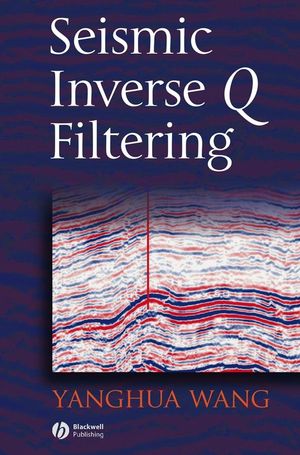Seismic Inverse Q FilteringISBN: 978-1-4051-8540-0
Hardcover
248 pages
May 2008, Wiley-Blackwell
 |
||||||
1. Introduction to inverse Q filtering.
1.1 The earth Q effect on seismic waves.
1.2 Inverse Q filters.
1.3 The effectiveness of inverse Q filtering.
Part I: Mathematical Q models.
2. Kolsky’s model for seismic attenuation and dispersion.
2.1 Kolsky’s attenuation-dispersion model.
2.2 Modification to the Kolsky model.
2.3 Accurate velocity dispersion correction.
2.4 Comparison with different Q models.
3. Mathematical definition of the earth Q models.
3.1 Mathematical definition of Q.
3.2 Kolsky’s Q model and the complex wavenumber.
3.3 The Strick–Azimi Q model.
3.4 Kjartansson’s constant-Q model.
3.5 Azimi’s second and third Q models.
3.6 Müller’s Q model.
3.7 The Zener or standard linear solid model.
3.8 The Cole–Cole Q model.
3.9 A general linear model.
Part II: Inverse Q filters.
4. Stabilized inverse Q filtering algorithm.
4.1 Basics of inverse Q filtering.
4.2 Numerical instability of inverse Q filtering.
4.3 Stabilized inverse Q filter.
4.4 Comparison with gain-limited inverse Q filter.
4.5 Comparison with a conventional inverse Q filter.
4.6 Synthetic and real data examples.
5. Inverse Q filtering for phase and amplitude separately.
5.1 Phase-only inverse Q filtering.
5.2 Amplitude-only inverse Q filtering.
5.3 Forward Q filtering.
5.4 Summary of inverse and forward Q filters by downward.
continuation.
5.5 Different stabilization schemes.
6. Layered implementation of inverse Q filters.
6.1 The layered approach to inverse Q filtering.
6.2 Inverse Q filtering within a constant-Q layer.
6.3 Phase- or amplitude-only inverse Q filtering.
6.4 Forward Q filtering.
6.5 Application of layered inverse Q filtering.
7. Inverse Q filtering in the Gabor transform domain.
7.1 Stabilized inverse Q filter.
7.2 The Gabor transform.
7.3 Inverse Q filtering by Gabor transform.
7.4 Forward Q filtering by Gabor transform.
7.5 An empirical formula for the stabilization factor.
8. The effectiveness of stabilized inverse Q filtering.
8.1 Inverse Q filtering of a land seismic section.
8.2 Flattening the amplitude spectrum and strengthening.
the relative amplitude.
8.3 Increasing the spectral bandwidth.
8.4 Improving the signal-to-noise ratio.
8.5 Enhancing seismic resolution.
8.6 Sensitivity of the resolution enhancement to Q values.
9. Migration with inverse Q filtering.
9.1 Inverse Q filtered migration in the wavenumberfrequency.
domain.
9.2 Stabilized migration with lateral variation in velocity.
and Q models.
9.3 The implicit finite-difference extrapolator in the spacefrequency.
domain.
9.4 Migration examples.
Part III: Q estimation.
10. Q estimation from vertical seismic profiling data.
10.1 The attenuation effect on VSP waveform.
10.2 Spectral ratio method for Q estimation.
10.3 The multitaper technique for spectral estimation.
10.4 Robust Q estimation from real VSP data.
11. Q analysis from reflection seismic data.
11.1 Q analysis based on amplitude attenuation.
11.2 Q analysis based on amplitude compensation.
11.3 Interval-Q calculation by linear inversion.
11.4 Q analyses on the P-P and P-SV wave sections.
12. Crosshole seismic tomography for the Q model.
12.1 Inverse theory for waveform tomography.
12.2 Issues in real data application.
12.3 Waveform inversion for the velocity model.
12.4 Waveform tomography for the attenuation model.
References.
Author index.
Subject index



